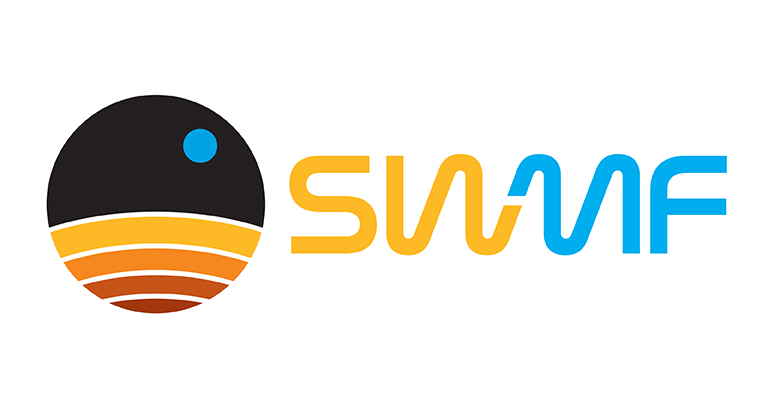
Space Weather Modeling Framework Gets a New Look
A new look makes its debut for the Space Weather Modeling Framework in June, giving a versatile tool a recognizable identity in the space weather community.

A new look makes its debut for the Space Weather Modeling Framework in June, giving a versatile tool a recognizable identity in the space weather community.
A new look makes its debut for the Space Weather Modeling Framework in June, giving a versatile tool a recognizable identity in the space weather community. The new logo was inspired by the SWMF Logo Competition, held at U-M Climate and Space in the spring.
Housed in the University of Michigan Department of Climate and Space Sciences and Engineering, the Space Weather Modeling Framework invites the collaboration of scientists, developers, and scholars from around the world. Also known as the SWMF, the versatile tool can be used to study the Sun, the heliosphere, and planetary space environments, including that of the Earth.
The winning designs were selected using a rank-choice voting system to choose the top three submissions. The winners of the SWMF Logo Competition included:
Designs from the three finalists were sent to a graphic design artist for further refinement and development. The new SWMF logo was created by Matthew Sturm, the graphic designer at Studio 921 based in Ann Arbor.
Along with the inspiration drawn from the winners, the new logo can be interpreted in a variety of ways. It can be interpreted as a solar eruptive event approaching Earth, as layers of the Earth’s atmosphere and an orbiting satellite, as a moon and a gas giant, and more. These interpretations all represent real use cases of the SWMF, which is what appealed to the team in this design.
Presenting the new Space Weather Framework Logo:

Using an innovative software package, the Space Weather Modeling Framework (SWMF) provides a common operating environment for a wide variety of space weather modeling components. Each component models a particular space physics domain, from the sun and the heliosphere to the magnetosphere. The SWMF configured for the Geospace environment is running operationally 24/7 at the Space Weather Prediction Center of NOAA, and it provides short term prediction for space weather forecasters. The SWMF can also be used for applications not related to space weather, such as high energy density physics, exoplanets, or general plasma physics, to name a few.
The most important models in the SWMF have been developed at the University of Michigan, NASA Goddard Space Flight Center, and Rice University. The full SWMF suite has been maintained since its inception at the University of Michigan. Every two years, the university convenes the SWMF User Meeting on campus, inviting those who tap into the technology to attend from many countries.
The tool gives scientists, developers, and scholars from institutions around the world a way to collaborate, in order to better understand the impacts of space weather. The framework is openly available to anyone who successfully registers to obtain a user license. A major part of the framework has also been released on GitHub under a noncommercial open-source license.